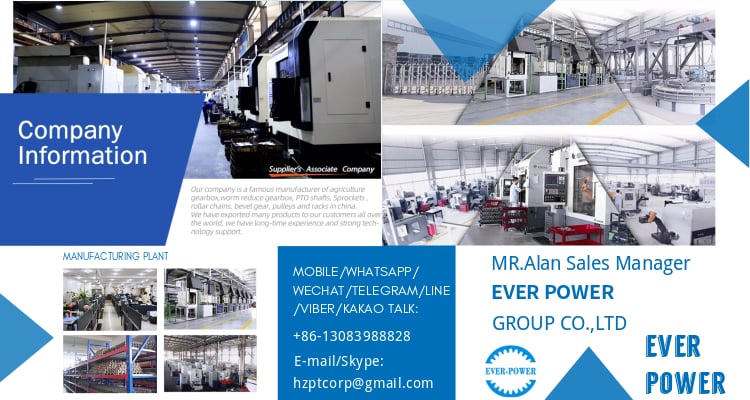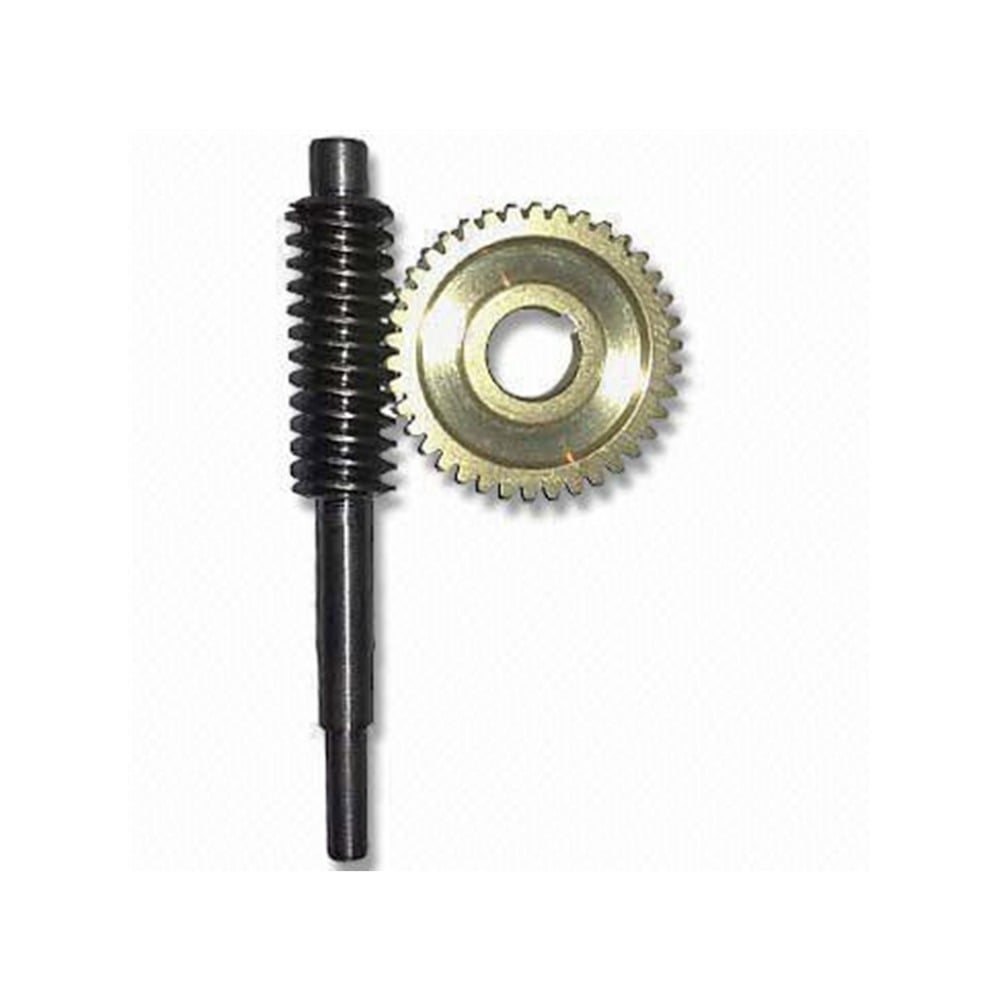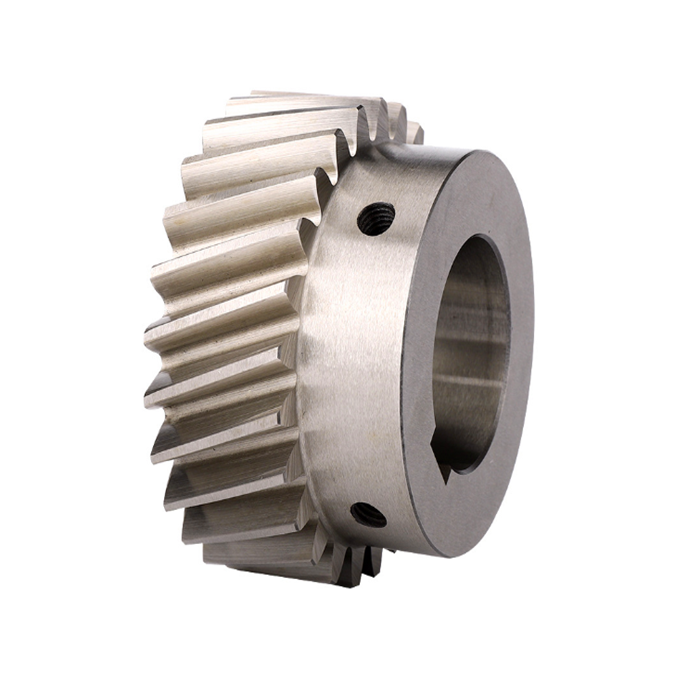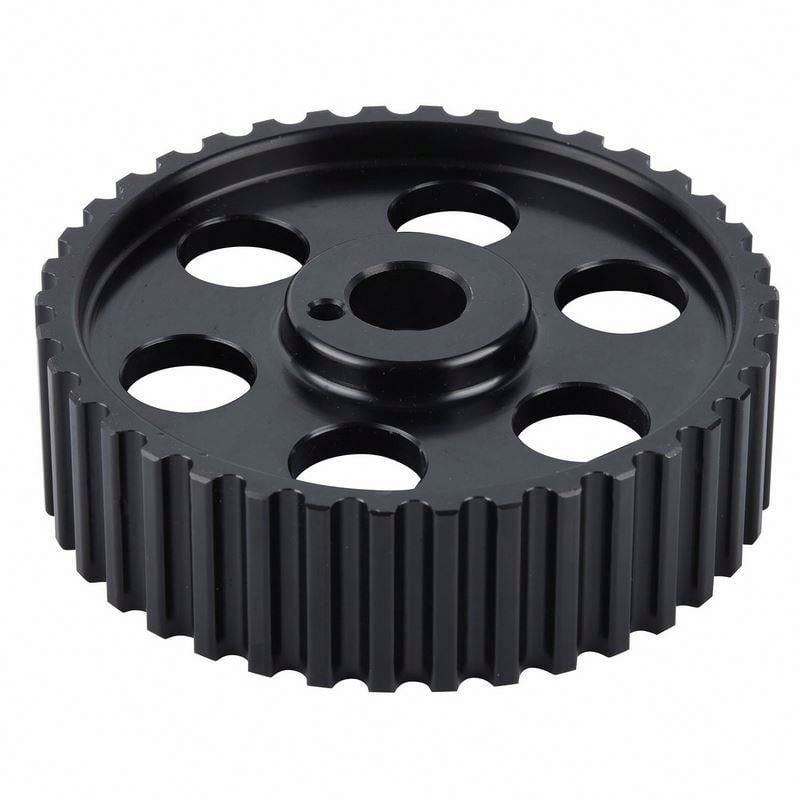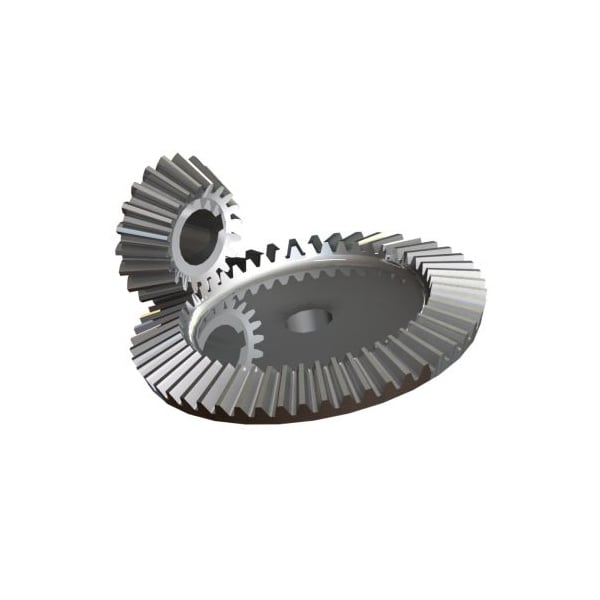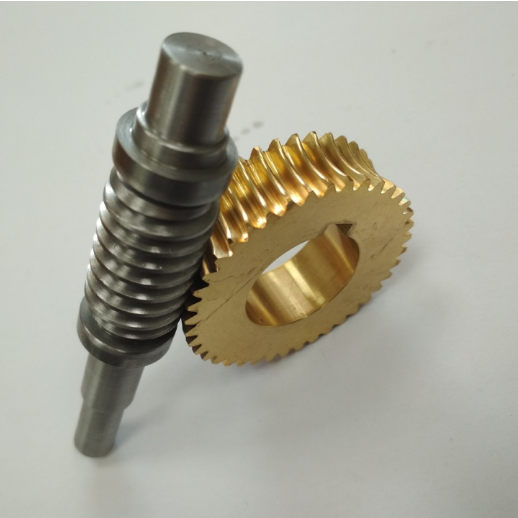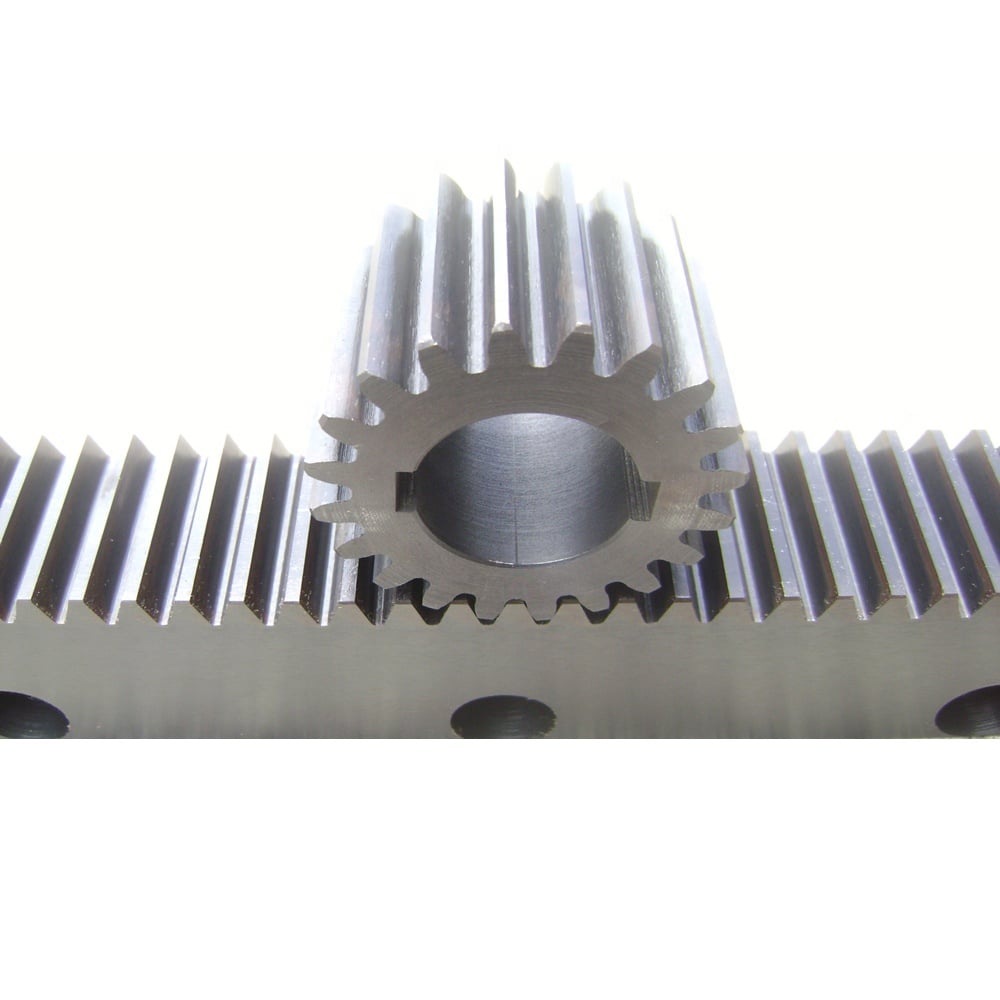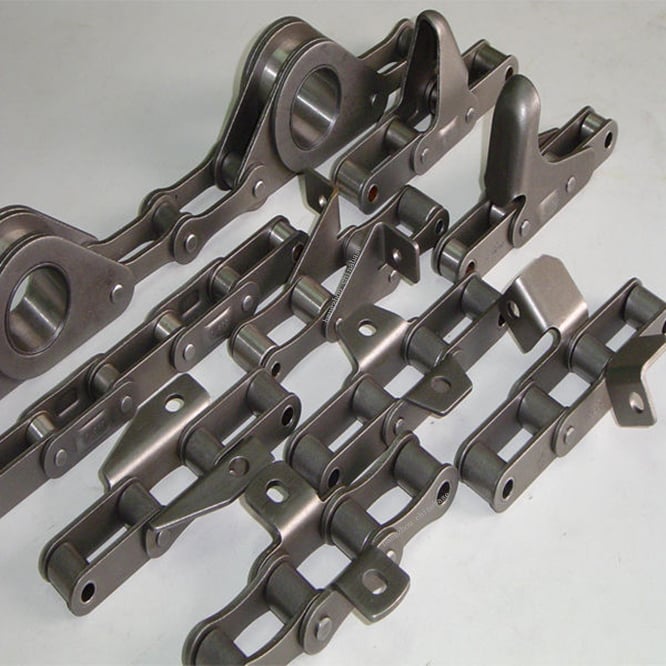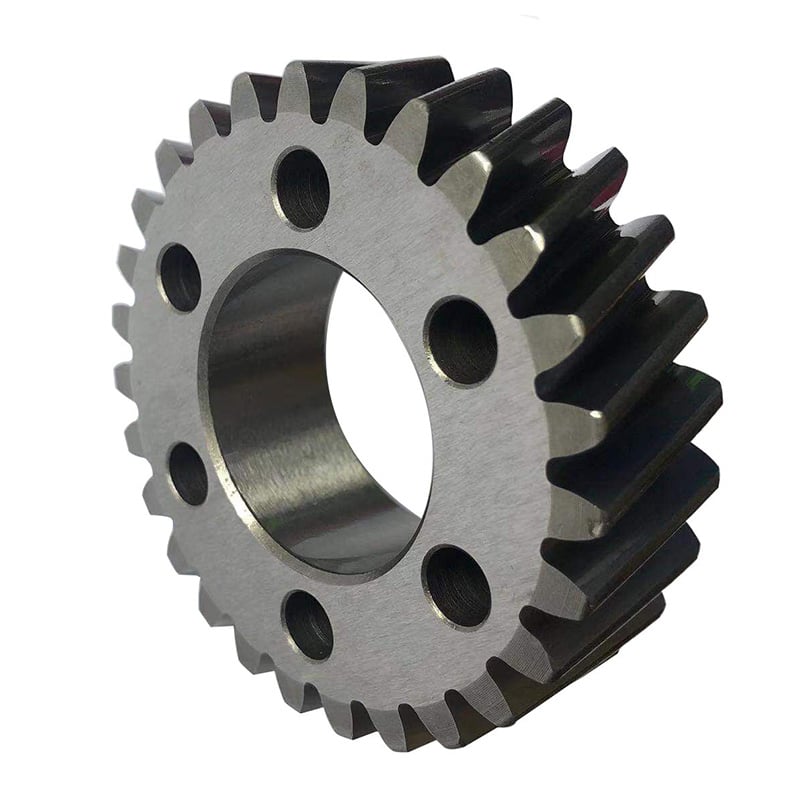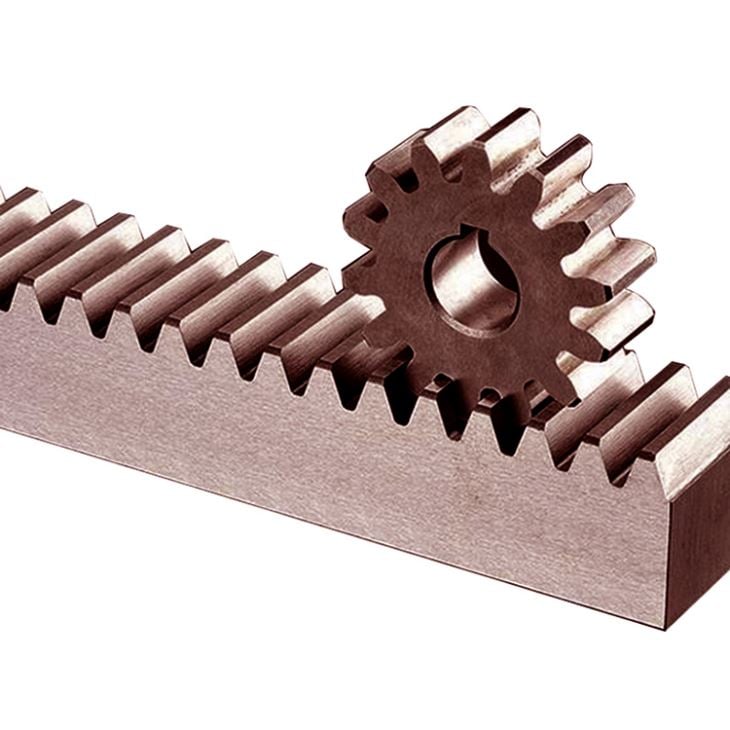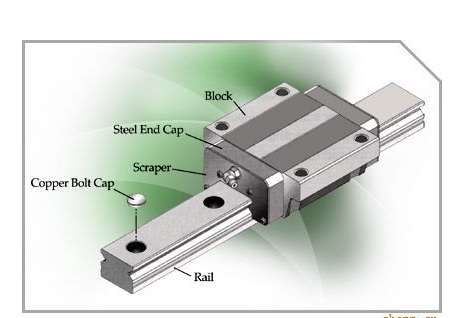Product Description
Precision Shaft by CNC Turning Machining
Our advantage:
*Specialization in CNC formulations of high precision and quality
*Independent quality control department
*Control plan and process flow sheet for each batch
*Quality control in all whole production
*Meeting demands even for very small quantities or single units
*Short delivery times
*Online orders and production progress monitoring
*Excellent price-quality ratio
*Absolute confidentiality
*Various materials (stainless steel, iron, brass, aluminum, titanium, special steels, industrial plastics)
*Manufacturing of complex components of 1 – 1000mm.
Production machine:
Inspection equipment :
Certificate:
/* March 10, 2571 17:59:20 */!function(){function s(e,r){var a,o={};try{e&&e.split(“,”).forEach(function(e,t){e&&(a=e.match(/(.*?):(.*)$/))&&1
| Material: | Carbon Steel |
|---|---|
| Load: | Drive Shaft |
| Stiffness & Flexibility: | Stiffness / Rigid Axle |
| Journal Diameter Dimensional Accuracy: | IT01-IT5 |
| Axis Shape: | Straight Shaft |
| Shaft Shape: | Real Axis |
| Customization: |
Available
| Customized Request |
|---|

How do drivelines handle variations in load and torque during operation?
Drivelines are designed to handle variations in load and torque during operation by incorporating various components and mechanisms that optimize power transmission and mitigate the effects of these variations. Let’s delve into the ways drivelines handle load and torque variations:
1. Flexible Couplings:
Drivelines often utilize flexible couplings, such as universal joints or constant velocity (CV) joints, to accommodate misalignment and angular variations between connected components. These couplings allow for smooth power transmission even when there are slight misalignments or changes in angles. They can compensate for variations in load and torque by flexing and adjusting their angles, thereby reducing stress on the driveline components.
2. Torque Converters:
In some driveline systems, such as those found in automatic transmissions, torque converters are employed. Torque converters use hydraulic principles to transmit power between the engine and the drivetrain. They provide a degree of slip, which allows for torque multiplication and smooth power delivery, especially during low-speed and high-load conditions. Torque converters help manage variations in torque by absorbing and dampening sudden changes, ensuring smoother operation.
3. Clutches:
Clutches play a critical role in drivelines, particularly in manual transmissions or systems that require torque control. Clutches engage and disengage the power flow between the engine and the drivetrain. By engaging or disengaging the clutch, the driveline can handle variations in load and torque. For instance, when starting a vehicle from a standstill, the clutch gradually engages to transmit power smoothly and prevent abrupt torque surges.
4. Gearboxes and Transmission Systems:
Drivelines often incorporate gearboxes and transmissions that provide multiple gear ratios. These systems allow for varying torque and speed outputs, enabling the driveline to adapt to different load conditions. By changing gears, the driveline can match the power requirements of the vehicle or machinery to the load and torque demands, optimizing power delivery and efficiency.
5. Differential Systems:
In drivelines for vehicles with multiple driven wheels, such as cars with rear-wheel drive or all-wheel drive, differential systems are employed. Differentials distribute torque between the driven wheels while allowing them to rotate at different speeds, particularly during turns. This capability helps handle variations in load and torque between the wheels, ensuring smooth operation and minimizing tire wear.
6. Control Systems:
Modern drivelines often incorporate control systems that monitor and adjust power distribution based on various inputs, including load and torque conditions. These control systems, such as electronic control units (ECUs), can optimize power delivery, manage gear shifts, and adjust torque output to handle variations in load and torque. They may also incorporate sensors and feedback mechanisms to continuously monitor driveline performance and make real-time adjustments.
7. Overload Protection Mechanisms:
Some driveline systems include overload protection mechanisms to safeguard against excessive load or torque. These mechanisms can include torque limiters, shear pins, or safety clutches that disengage or slip when the load or torque exceeds a certain threshold. By providing a fail-safe mechanism, drivelines can protect the components from damage due to sudden or excessive variations in load and torque.
By incorporating these components and mechanisms, drivelines are capable of handling variations in load and torque during operation. They optimize power transmission, ensure smooth operation, and protect the driveline components from excessive stress or damage, ultimately enhancing the performance and longevity of the driveline system.

How do drivelines enhance the performance of different types of vehicles?
Drivelines significantly contribute to enhancing the performance of different types of vehicles by optimizing power delivery, improving traction, and tailoring the driving characteristics to suit specific needs. Here’s a detailed explanation of how drivelines enhance performance in various vehicle types:
1. Passenger Cars:
In passenger cars, driveline configurations, such as front-wheel drive (FWD), rear-wheel drive (RWD), and all-wheel drive (AWD), play a crucial role in performance. Here’s how drivelines enhance performance in passenger cars:
- FWD: Front-wheel drive systems provide better traction and stability, particularly in adverse weather conditions. FWD drivelines distribute weight more evenly over the front wheels, resulting in improved grip during acceleration and cornering.
- RWD: Rear-wheel drive drivelines offer better weight distribution, allowing for improved handling and balanced performance. RWD vehicles typically exhibit better acceleration and a more engaging driving experience, especially in performance-oriented cars.
- AWD: All-wheel drive drivelines deliver power to all four wheels, improving traction and stability in various driving conditions. AWD systems enhance performance by maximizing grip and providing optimal power distribution between the front and rear wheels.
2. Sports Cars and Performance Vehicles:
Driveline systems in sports cars and performance vehicles are designed to enhance acceleration, handling, and overall driving dynamics. Key features include:
- Rear-Wheel Drive (RWD): RWD drivelines are often favored in sports cars for their ability to deliver power to the rear wheels, resulting in better weight transfer during acceleration and improved handling characteristics.
- Performance-oriented AWD: Some high-performance vehicles employ advanced AWD systems that can variably distribute torque between the front and rear wheels. These systems enhance traction, stability, and cornering capabilities, allowing for superior performance on both dry and slippery surfaces.
- Torque Vectoring: Certain driveline systems incorporate torque vectoring technology, which actively varies the torque distribution between wheels. This enables precise control during cornering, reducing understeer and enhancing agility and stability.
3. Off-Road Vehicles:
Drivelines in off-road vehicles are designed to provide exceptional traction, durability, and maneuverability in challenging terrains. Key features include:
- Four-Wheel Drive (4WD) and All-Wheel Drive (AWD): 4WD and AWD drivelines are commonly used in off-road vehicles to improve traction on uneven surfaces. These drivelines distribute power to all wheels, allowing for better grip and enhanced off-road capability.
- Differential Locks: Off-road drivelines often incorporate differential locks that can be engaged to lock the wheels on an axle together. This feature ensures that power is evenly distributed to all wheels, maximizing traction and overcoming challenging obstacles.
- High Ground Clearance: Drivelines in off-road vehicles are designed to accommodate higher ground clearance, allowing for improved approach, departure, and breakover angles. This design feature enhances the vehicle’s ability to navigate over rough terrain without damaging the driveline components.
4. Trucks and Commercial Vehicles:
Drivelines in trucks and commercial vehicles are engineered to provide high torque delivery, durability, and efficiency. Key features include:
- High Torque Handling: Drivelines in trucks and commercial vehicles are designed to handle high torque outputs from powerful engines, enabling efficient towing, hauling, and overall performance.
- Transmission Options: Drivelines in trucks often feature transmissions with multiple gear ratios, allowing drivers to select the appropriate gear for different load conditions. This enhances performance, fuel efficiency, and overall drivability.
- Efficient Power Transfer: Drivelines in commercial vehicles focus on maximizing power transfer efficiency, minimizing energy losses, and optimizing fuel economy. This is achieved through the use of efficient transmission designs, low-friction components, and advanced control systems.
5. Electric and Hybrid Vehicles:
Drivelines in electric and hybrid vehicles play a crucial role in delivering power from the electric motor(s) to the wheels. Key features include:
- Instant Torque: Electric drivelines offer instant torque delivery, providing quick acceleration andresponsive performance. This enhances the driving experience and allows for swift overtaking and merging.
- Regenerative Braking: Electric and hybrid drivelines can incorporate regenerative braking systems, which convert kinetic energy during braking into electrical energy. This improves overall efficiency and extends the vehicle’s range.
- Multi-Motor Systems: Some electric and hybrid drivelines utilize multiple motors to drive different axles or wheels independently. This enables advanced torque vectoring and enhances handling, stability, and traction control.
These are just a few examples of how drivelines enhance the performance of different types of vehicles. Driveline configurations, technologies, and engineering considerations are tailored to each vehicle type, optimizing power delivery, handling, traction, and other performance characteristics specific to their intended use and market segment.

What benefits do drivelines offer for different types of vehicles and equipment?
Drivelines offer several benefits for different types of vehicles and equipment across various industries. They play a critical role in power transmission, mobility, efficiency, and overall performance. Here’s a detailed explanation of the benefits drivelines offer for different types of vehicles and equipment:
1. Power Transmission: Drivelines are designed to efficiently transmit power from the engine or power source to the driven components, such as wheels, tracks, implements, or machinery. They ensure the smooth transfer of torque, allowing vehicles and equipment to generate the necessary power for propulsion, lifting, hauling, or other tasks. By effectively transmitting power, drivelines maximize the performance and productivity of vehicles and equipment.
2. Mobility and Maneuverability: Drivelines enable vehicles and equipment to achieve mobility and maneuverability across various terrains and working conditions. By transmitting power to the wheels or tracks, drivelines provide the necessary traction and control to overcome obstacles, navigate uneven surfaces, and operate in challenging environments. They contribute to the overall stability, handling, and agility of vehicles and equipment, allowing them to move efficiently and safely.
3. Versatility and Adaptability: Drivelines offer versatility and adaptability for different types of vehicles and equipment. They can be designed and configured to meet specific requirements, such as front-wheel drive, rear-wheel drive, four-wheel drive, or all-wheel drive systems. This flexibility allows vehicles and equipment to adapt to various operating conditions, including normal roads, off-road terrains, agricultural fields, construction sites, or industrial facilities. Drivelines also accommodate different power sources, such as internal combustion engines, electric motors, or hybrid systems, enhancing the adaptability of vehicles and equipment.
4. Efficiency and Fuel Economy: Drivelines contribute to efficiency and fuel economy in vehicles and equipment. They optimize power transmission by utilizing appropriate gear ratios, minimizing energy losses, and improving overall system efficiency. Drivelines with advanced technologies, such as continuously variable transmissions (CVTs) or automated manual transmissions (AMTs), can further enhance efficiency by continuously adjusting gear ratios based on load and speed conditions. Efficient driveline systems help reduce fuel consumption, lower emissions, and maximize the operational range of vehicles and equipment.
5. Load Carrying Capacity: Drivelines are designed to handle and transmit high torque and power, enabling vehicles and equipment to carry heavy loads. They incorporate robust components, such as heavy-duty axles, reinforced drive shafts, and durable differentials, to withstand the demands of load-bearing applications. Drivelines ensure the reliable transmission of power, allowing vehicles and equipment to transport materials, tow trailers, or carry payloads efficiently and safely.
6. Safety and Control: Drivelines contribute to safety and control in vehicles and equipment. They enable precise control over acceleration, deceleration, and speed, enhancing driver or operator confidence and maneuverability. Drivelines with features like traction control systems, limited-slip differentials, or electronic stability control provide additional safety measures by improving traction, stability, and handling in challenging road or operating conditions. By ensuring optimal power distribution and control, drivelines enhance the overall safety and stability of vehicles and equipment.
7. Durability and Reliability: Drivelines are built to withstand harsh operating conditions and provide long-term durability and reliability. They are engineered with high-quality materials, precise manufacturing processes, and advanced technologies to ensure the driveline components can endure the stresses of power transmission. Well-designed drivelines require minimal maintenance, reducing downtime and enhancing the overall reliability of vehicles and equipment.
8. Specialized Functionality: Drivelines offer specialized functionality for specific types of vehicles and equipment. For example, in off-road vehicles or heavy-duty construction equipment, drivelines with features like differential locks, torque vectoring, or adjustable suspension systems provide enhanced traction, stability, and control. In agricultural machinery, drivelines with power take-off (PTO) units enable the connection of various implements for specific tasks like plowing, seeding, or harvesting. Such specialized driveline features enhance the performance and versatility of vehicles and equipment in their respective applications.
In summary, drivelines provide numerous benefits for different types of vehicles and equipment. They ensure efficient power transmission, facilitate mobility and maneuverability, offer versatility and adaptability, contribute to efficiency and fuel economy, handle heavy loads, enhance safety and control, provide durability and reliability, and offer specialized functionality. By incorporating well-designed drivelines, manufacturers can optimize the performance, productivity, and overall functionality of vehicles and equipment across various industries.


editor by CX 2024-01-11
China Standard Best 90 Degree Hollow Shaft Gear Box, Right Angle Pump Drive Hollow Shaft Price
Product Description
We are professional best 90 degree hollow shaft gear box, right angle pump drive hollow shaft manufacturers and suppliers from China. All 90 degree hollow shaft gear box, right angle pump drive hollow shaft will be tested and inspection reports before products shipment.
JTP Series Cubic Bevel Gearbox
CZPT JTP series cubic bevel gearbox is also known as cubic right angle miter gearbox, cubic 90 degree bevel gearbox, cubic miter bevel gear box, or cubic spiral bevel gear reducers. JTP series cubic bevel gearbox is a right-angle shaft type gear box of spiral bevel gears for general applications with high transmission capacity, high performance and high efficiency. 1:1, 1.5:1, 2:1, 3:1, 4:1 and 5:1 gear ratios as standard. 2 way(one input 1 output), 3 way(one input 2 output, or 2 input 1 output), 4 way(two input 2 output) drive shafts as standard. CZPT shaft as standard, customize hollow shaft or motor flange to bolt an IEC motor flange. Maximum torque 1299N.m. Maximum input and output speed 1450RPM. There are 8 models: JTP65 mini cubic bevel gearbox, JTP90 cubic bevel gearbox, JTP110 cubic bevel gearbox, JTP140 cubic bevel gearbox, JTP170 cubic bevel gearbox, JTP210 cubic bevel gearbox, JTP240 cubic bevel gearbox and JTP280 cubic bevel gearbox.
| JTP65 Mini Cubic Bevel Gearbox 1. bevel gear ratio 1:1 2. CZPT drive shafts diameter12mm 3. CZPT input and output shaft shafts 4. 2 way, 3 way, 4 way gearbox 5. input power maximum 1.8Kw 6. drive torque maximum 13.5Nm 7. maximum input 156567X3, registered Capital 500000CNY) is a leading manufacturer and supplier in China for screw jacks (mechanical actuators), bevel gearboxes, lifting systems, linear actuators, gearmotors and speed reducers, and others linear motion and power transmission products. We are Alibaba, Made-In-China and SGS (Serial NO.: QIP-ASI192186) audited manufacturer and supplier. We also have a strict quality system, with senior engineers, experienced skilled workers and practiced sales teams, we consistently provide the high quality equipments to meet the customers electro-mechanical actuation, lifting and positioning needs. CZPT Industry guarantees quality, reliability, performance and value for today’s demanding industrial applications. Website 1: http://screw-jacks Website 2: /* March 10, 2571 17:59:20 */!function(){function s(e,r){var a,o={};try{e&&e.split(“,”).forEach(function(e,t){e&&(a=e.match(/(.*?):(.*)$/))&&1
Can drive shafts be adapted for use in both automotive and industrial settings?Yes, drive shafts can be adapted for use in both automotive and industrial settings. While there may be some differences in design and specifications based on the specific application requirements, the fundamental principles and functions of drive shafts remain applicable in both contexts. Here’s a detailed explanation: 1. Power Transmission: Drive shafts serve the primary purpose of transmitting rotational power from a power source, such as an engine or motor, to driven components, which can be wheels, machinery, or other mechanical systems. This fundamental function applies to both automotive and industrial settings. Whether it’s delivering power to the wheels of a vehicle or transferring torque to industrial machinery, the basic principle of power transmission remains the same for drive shafts in both contexts. 2. Design Considerations: While there may be variations in design based on specific applications, the core design considerations for drive shafts are similar in both automotive and industrial settings. Factors such as torque requirements, operating speeds, length, and material selection are taken into account in both cases. Automotive drive shafts are typically designed to accommodate the dynamic nature of vehicle operation, including variations in speed, angles, and suspension movement. Industrial drive shafts, on the other hand, may be designed for specific machinery and equipment, taking into consideration factors such as load capacity, operating conditions, and alignment requirements. However, the underlying principles of ensuring proper dimensions, strength, and balance are essential in both automotive and industrial drive shaft designs. 3. Material Selection: The material selection for drive shafts is influenced by the specific requirements of the application, whether in automotive or industrial settings. In automotive applications, drive shafts are commonly made from materials such as steel or aluminum alloys, chosen for their strength, durability, and ability to withstand varying operating conditions. In industrial settings, drive shafts may be made from a broader range of materials, including steel, stainless steel, or even specialized alloys, depending on factors such as load capacity, corrosion resistance, or temperature tolerance. The material selection is tailored to meet the specific needs of the application while ensuring efficient power transfer and durability. 4. Joint Configurations: Both automotive and industrial drive shafts may incorporate various joint configurations to accommodate the specific requirements of the application. Universal joints (U-joints) are commonly used in both contexts to allow for angular movement and compensate for misalignment between the drive shaft and driven components. Constant velocity (CV) joints are also utilized, particularly in automotive drive shafts, to maintain a constant velocity of rotation and accommodate varying operating angles. These joint configurations are adapted and optimized based on the specific needs of automotive or industrial applications. 5. Maintenance and Service: While maintenance practices may vary between automotive and industrial settings, the importance of regular inspection, lubrication, and balancing remains crucial in both cases. Both automotive and industrial drive shafts benefit from periodic maintenance to ensure optimal performance, identify potential issues, and prolong the lifespan of the drive shafts. Lubrication of joints, inspection for wear or damage, and balancing procedures are common maintenance tasks for drive shafts in both automotive and industrial applications. 6. Customization and Adaptation: Drive shafts can be customized and adapted to meet the specific requirements of various automotive and industrial applications. Manufacturers often offer drive shafts with different lengths, diameters, and joint configurations to accommodate a wide range of vehicles or machinery. This flexibility allows for the adaptation of drive shafts to suit the specific torque, speed, and dimensional requirements of different applications, whether in automotive or industrial settings. In summary, drive shafts can be adapted for use in both automotive and industrial settings by considering the specific requirements of each application. While there may be variations in design, materials, joint configurations, and maintenance practices, the fundamental principles of power transmission, design considerations, and customization options remain applicable in both contexts. Drive shafts play a crucial role in both automotive and industrial applications, enabling efficient power transfer and reliable operation in a wide range of mechanical systems.
Can you provide real-world examples of vehicles and machinery that use drive shafts?Drive shafts are widely used in various vehicles and machinery to transmit power from the engine or power source to the wheels or driven components. Here are some real-world examples of vehicles and machinery that utilize drive shafts: 1. Automobiles: Drive shafts are commonly found in automobiles, especially those with rear-wheel drive or four-wheel drive systems. In these vehicles, the drive shaft transfers power from the transmission or transfer case to the rear differential or front differential, respectively. This allows the engine’s power to be distributed to the wheels, propelling the vehicle forward. 2. Trucks and Commercial Vehicles: Drive shafts are essential components in trucks and commercial vehicles. They are used to transfer power from the transmission or transfer case to the rear axle or multiple axles in the case of heavy-duty trucks. Drive shafts in commercial vehicles are designed to handle higher torque loads and are often larger and more robust than those used in passenger cars. 3. Construction and Earthmoving Equipment: Various types of construction and earthmoving equipment, such as excavators, loaders, bulldozers, and graders, rely on drive shafts for power transmission. These machines typically have complex drivetrain systems that use drive shafts to transfer power from the engine to the wheels or tracks, enabling them to perform heavy-duty tasks on construction sites or in mining operations. 4. Agricultural Machinery: Agricultural machinery, including tractors, combines, and harvesters, utilize drive shafts to transmit power from the engine to the wheels or driven components. Drive shafts in agricultural machinery are often subjected to demanding conditions and may have additional features such as telescopic sections to accommodate variable distances between components. 5. Industrial Machinery: Industrial machinery, such as manufacturing equipment, generators, pumps, and compressors, often incorporate drive shafts in their power transmission systems. These drive shafts transfer power from electric motors, engines, or other power sources to various driven components, enabling the machinery to perform specific tasks in industrial settings. 6. Marine Vessels: In marine applications, drive shafts are commonly used to transmit power from the engine to the propeller in boats, ships, and other watercraft. Marine drive shafts are typically longer and designed to withstand the unique challenges posed by water environments, including corrosion resistance and appropriate sealing mechanisms. 7. Recreational Vehicles (RVs) and Motorhomes: RVs and motorhomes often employ drive shafts as part of their drivetrain systems. These drive shafts transfer power from the transmission to the rear axle, allowing the vehicle to move and providing propulsion. Drive shafts in RVs may have additional features such as dampers or vibration-reducing components to enhance comfort during travel. 8. Off-Road and Racing Vehicles: Off-road vehicles, such as SUVs, trucks, and all-terrain vehicles (ATVs), as well as racing vehicles, frequently utilize drive shafts. These drive shafts are designed to withstand the rigors of off-road conditions or high-performance racing, transmitting power efficiently to the wheels and ensuring optimal traction and performance. 9. Railway Rolling Stock: In railway systems, drive shafts are employed in locomotives and some types of rolling stock. They transfer power from the locomotive’s engine to the wheels or propulsion system, enabling the train to move along the tracks. Railway drive shafts are typically much longer and may have additional features to accommodate the articulated or flexible nature of some train configurations. 10. Wind Turbines: Large-scale wind turbines used for generating electricity incorporate drive shafts in their power transmission systems. The drive shafts transfer rotational energy from the turbine’s blades to the generator, where it is converted into electrical power. Drive shafts in wind turbines are designed to handle the significant torque and rotational forces generated by the wind. These examples demonstrate the broad range of vehicles and machinery that rely on drive shafts for efficient power transmission and propulsion. Drive shafts are essential components in various industries, enabling the transfer of power from the source to the driven components, ultimately facilitating movement, operation, or the performance of specific tasks.
How do drive shafts handle variations in length and torque requirements?Drive shafts are designed to handle variations in length and torque requirements in order to efficiently transmit rotational power. Here’s an explanation of how drive shafts address these variations: Length Variations: Drive shafts are available in different lengths to accommodate varying distances between the engine or power source and the driven components. They can be custom-made or purchased in standardized lengths, depending on the specific application. In situations where the distance between the engine and the driven components is longer, multiple drive shafts with appropriate couplings or universal joints can be used to bridge the gap. These additional drive shafts effectively extend the overall length of the power transmission system. Additionally, some drive shafts are designed with telescopic sections. These sections can be extended or retracted, allowing for adjustments in length to accommodate different vehicle configurations or dynamic movements. Telescopic drive shafts are commonly used in applications where the distance between the engine and the driven components may change, such as in certain types of trucks, buses, and off-road vehicles. Torque Requirements: Drive shafts are engineered to handle varying torque requirements based on the power output of the engine or power source and the demands of the driven components. The torque transmitted through the drive shaft depends on factors such as the engine power, load conditions, and the resistance encountered by the driven components. Manufacturers consider torque requirements when selecting the appropriate materials and dimensions for drive shafts. Drive shafts are typically made from high-strength materials, such as steel or aluminum alloys, to withstand the torque loads without deformation or failure. The diameter, wall thickness, and design of the drive shaft are carefully calculated to ensure it can handle the expected torque without excessive deflection or vibration. In applications with high torque demands, such as heavy-duty trucks, industrial machinery, or performance vehicles, drive shafts may have additional reinforcements. These reinforcements can include thicker walls, cross-sectional shapes optimized for strength, or composite materials with superior torque-handling capabilities. Furthermore, drive shafts often incorporate flexible joints, such as universal joints or constant velocity (CV) joints. These joints allow for angular misalignment and compensate for variations in the operating angles between the engine, transmission, and driven components. They also help absorb vibrations and shocks, reducing stress on the drive shaft and enhancing its torque-handling capacity. In summary, drive shafts handle variations in length and torque requirements through customizable lengths, telescopic sections, appropriate materials and dimensions, and the inclusion of flexible joints. By carefully considering these factors, drive shafts can efficiently and reliably transmit power while accommodating the specific needs of different applications.
DIN made in China – replacement parts – in Liverpool United Kingdom ANSI Standard Spiral Bevel Gear Worm Gear with ce certificate top quality low price
We – EPG Group the bigge EPT Chain and agricultural gearbox manufacturing unit in China with 5 distinct branches. For much more details: Mobile/whatsapp/telegram/Kakao us at: 0086~13083988828 13858117778 0571 88828 XIHU (WE EPT LAKE) DIS. EPT Chain Group is the mo EPT specialist manufacturer of power transmission in China, manufacturing roller chains, industry sprockets, bike sprockets, casting sprockets, different type of couplings, pulleys, taper bushes, locking products, gears, shafts, CNC precision areas and so on. We have handed ISO9001, ISO14001, TS16949 this sort of top quality and enviroment certification. DIN ANSI Common Spiral Bevel Equipment Worm Equipment
The use of unique gear manufacturer’s (OEM) part numbers or emblems , e.g. CASE® and John Deere® are for reference reasons only and for indicating item use and compatibility. Our business and the detailed replacement elements contained herein are not sponsored, accepted, or created by the OEM.
Best China manufacturer & factory China in Chiclayo Peru manufacturer Plastic CNC straight teeth standard pinion gear and rack nylon With high quality best price
Having accumulated precious experience in cooperating with foreign customers, a specialized supplier of a full range of chains, sprockets, gears, gear racks, V-belts, couplings and reducers, pto shaft, agricultural gearboxes….
Overview
Quick Details
Supply Ability
Packaging & Delivery
Online CustomizationEPG offer widest range of gearbox and speed reducers, conveyor chains and transmission parts like gear, sprocket, racks, pulley, shaves and taper bushes etc for various applications Product Description
Product detail
Different type gear
worm gear
helical gear
spur gear
bevel gear
gear shaft
spiral bevel gear
Different material
brass gear
C45/42CR gear
plastic gear/nylon/pom
stainless steel
Spur gear catalogue
Application
Packing & Delivery
Payment
Main product
roller chain
gear
timing pulley
gear rack
linear rail and block
ball screw Company Profie
.HangZhou EPG – The biggest transmission parts manufacuturer in China Electrical Equipment Co.,Ltd was founded in HangZhou in 2008 and is a professional manufacturer and exporter that is concerned with the design, development and production.With detailed requirments, we can also develop your special designed product. Our product range includes all kinds of helical gear, spur gear, bevel gear, gear rack, worm gear, sprockets,chains,bearings.Keeping in mind that good service is the key to cooperating with clients, we strive to meet high quality standards, offer competitive prices and ensure prompt delivery. In this way, our products have continued to gain market acceptance and customers satisfaction over the past few years. We are aiming to meet the demands of the clients around the world..If you are interested in any of our products or would like to discuss a potential order, please feel free to contact us. We are looking forward to developing successful business relationships with new clients around the world in the future.
It must be fixed on a flat surface to avoid either vibrations or tensions nonwished
|





